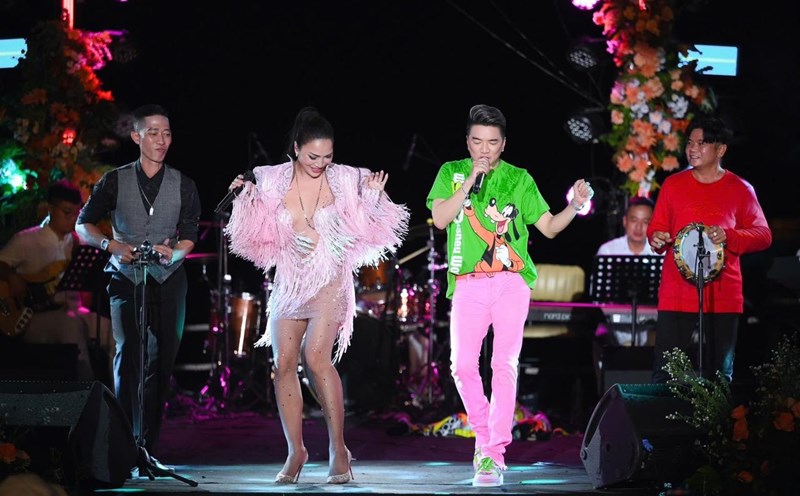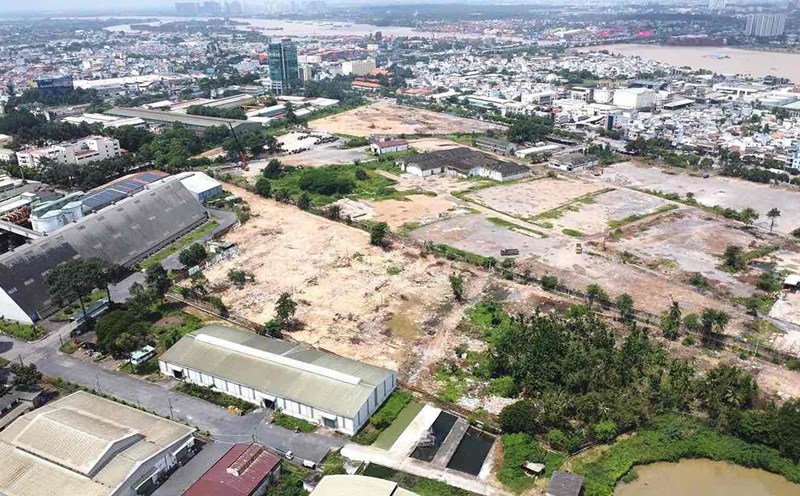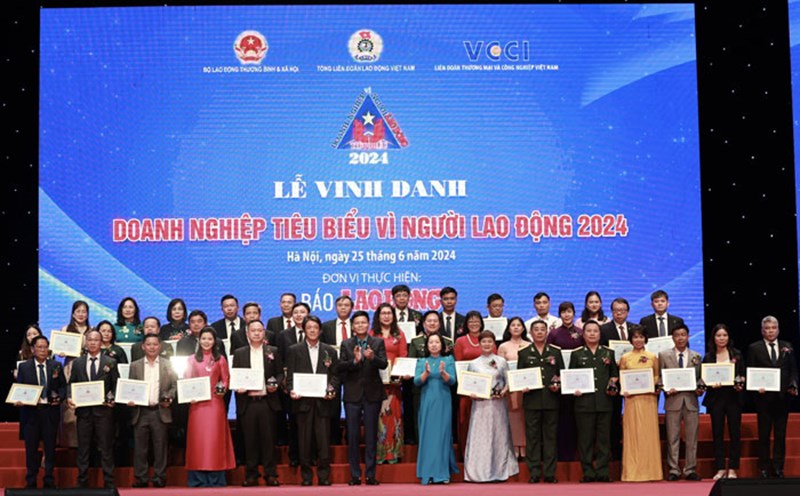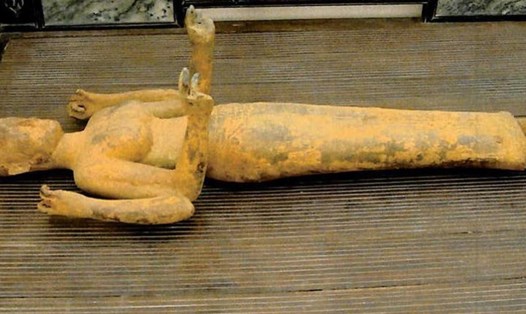Not only recognized as a National Treasure of Vietnam, this work is also considered by international researchers to be one of the world's masterpieces of sculpture, a typical symbol of the beauty and shaping techniques of the Tra Kieu art style.
Aesthetic beauty and sophisticated sculpting language
The statue was accidentally discovered in 1978 in Huong Que village, Da Nang city, in a state of disrepair, losing its head, two arms and two feet. However, the remaining body, with a height of 116cm, is still enough to move viewers with an almost perfect physical beauty and a sophisticated sculpture language to every detail.
The statue is made from satin, a familiar material in Champa sculptures, with a surface that has been stained by time but still retains soft, graceful lines. The artifact is being preserved and displayed at the Ho Chi Minh City Museum of History, one of the most important highlights of the Champa cultural exhibition space.
The goddess is shown in a straight position, her body slightly leaning to the left in the form of tribhanga (three-tone body) gently and delicately, in contrast to the obvious curving that is often seen in Indian art. This standing position not only creates softness and charm but also brings a lively feeling, as if the goddess is moving slowly.
The entire body weight seems to be on the right leg, while the left leg naturally declines. The way ancient Champa artisans handled their love life created an incredibly balanced and harmonious body structure. The enlarged, round chest, small slim waist and wide hips are described in a standard way, both honoring the prosperous beauty of women and exuding the solemnity and Dieuiness of a goddess.
Researcher Jean Boisselier, a leading expert in Southeast Asian art, did not hesitate to praise the statue as "one of the most perfect works of Champa art" and compared its beauty to the masterpieces of ancient Greek art.
The goddess wore a thin, tight sarong on her lower body, revealing her body's seductive curves. The fabric lines are carved very softly, flowing down into parallel lines between the thighs, creating a delicate visual rhythm.
The fabric belt is elaborately knotted in the front, with two long fabric strips hanging down the heels, further enhancing the charm and grace of the overall look. In particular, the surface of the sarong board is decorated with small, sunken patterns, a detail that shows the meticulousness and patience of the artist. Although her arm is gone, through the remaining traces, it is possible to see the goddess wearing bracelets on both wrists and biceps, a familiar jewelry feature of Champa statues.
Mystery about identity and symbolic value
One of the big questions that researchers have not yet reached an end with is the identity of the goddess. Because the statue is found independently, not accompanied by typical attributes (ayudha) or rides (vahana), it is difficult to accurately determine the name of the god. Many theories have been proposed. The most common theory is that this is a statue of Uma or Parvati, the wife of the god Shiva.
In the Ba La of Champa, Shiva is the Supreme God, and his devi (goddesses) as shakti (energy) also play an extremely important role. The gentle, benishing and feminine beauty of the statue is completely consistent with the image of Parvati, the goddess of love, marriage and devotion. In addition, the Tra Kieu style has many other famous sculptures related to Shiva and his family, such as the Tra Kieu altar depicting the wedding scene of Shiva and Parvati.
However, some other researchers have suggested that this may be an image of Laksmi, the goddess of wealth and prosperity, the wife of the god Vishnu. Although Vishnu teachings do not take the dominant position of Shiva teachings in Champa, it still has a certain vitality.
The vivid beauty and fulfillment of the statue can also be associated with Laksmi's image. Another theory suggests that this may be a form of devi in general, a manifestation of the Goddess Mother, who was worshiped since prehistoric times and later merged into major religious systems.
Not having a clear identifying property could be an artisan's intention, to create an overarching goddess image, focusing entirely on expressing pure godly beauty rather than a specific mythological story. Until there is new archaeological evidence, the identity of the goddess Huong Que will still be an attractive topic of academic discussion.
According to the Ho Chi Minh City Museum of History: According to the Champa legend, the female goddess devi is named Rija Kula Hara devi, the wife of King Indravarman II, founder of the Song Dynasty, in the 9th century. Because the female goddess devi has merited the country, especially she has a kind heart, pitying the poor and helping the children. After her death, she was courted by King Jaya Shinhavarman I and a tower was built for her worship."
Regardless of which god they represent, the statue of goddess Huong Que is still a powerful testament to the sculpture talent and aesthetic concept of the ancient Champa people. The work moves beyond the rigid shaping rules of elementary Indian art to reach its own expressed language, imbued with the indigenous spirit.
Champa artisans do not machine-ily copy foreign models but have absorbed and transformed them to create a unique artistic style. The softness of muscles, the balance of body ratio, and the superficial and surreal beauty of the statue show a thorough observation of human shoes combined with a deep idealization of beauty.
The statue of the goddess Huong Que is an invaluable heritage, a pinnacle of Champa sculpture. The work is a perfect blend of skillful crafting techniques and sophisticated aesthetic senses. It has both clear influences from Indian civilization and vividly expresses the unique creative identity of the Champa people.









